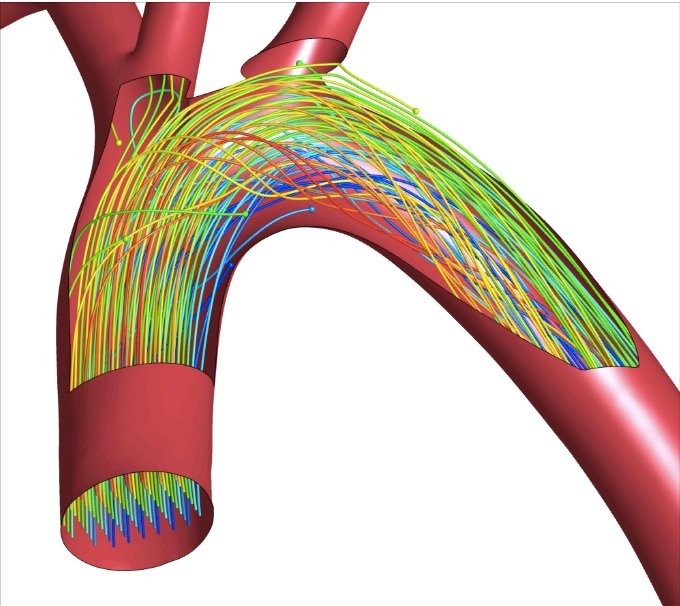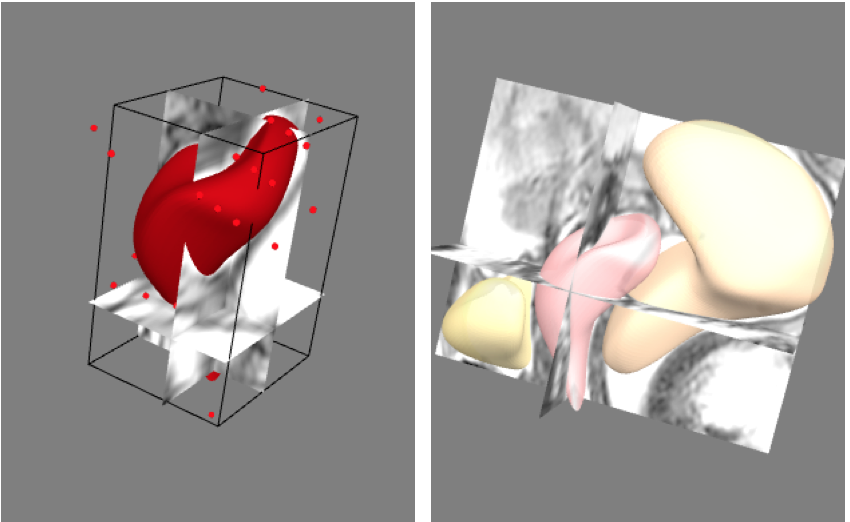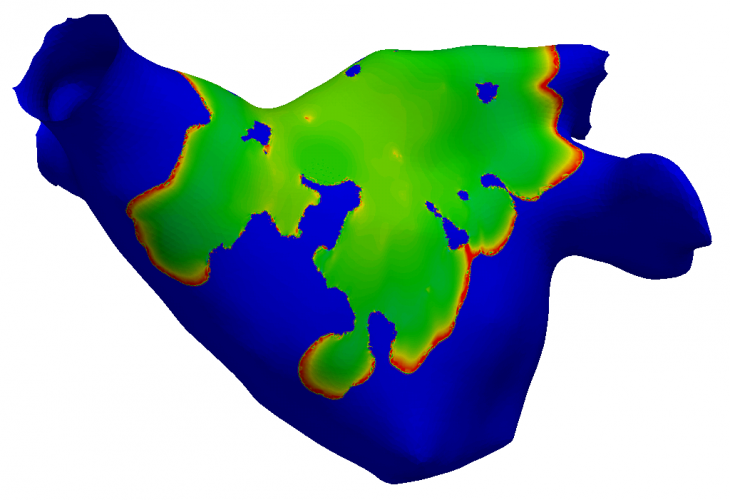Scope
Computational methods have had a wide and deep impact in all areas of our lives, leading to the development of safer, lighter and more effective products. One current and burning challenge is to enable such developments to have similar impact onto biomechanics and biomedicine. The promises of personalised medicine in terms of improved patient-specific care remain indeed largely elusive and clinicians and patients are awaiting personalised computer models and in-silico simulation tools able to decisively improve patient-specific healthcare and well-being.
Numerical modelling of medical therapies has the potential to help with diagnosis, enable the estimation of the impact of surgical interventions, optimise treatment schemes, train surgeons to hone their skills and guide them during the surgical interventions themselves.
If we were able to model the effect of treatments, in particular surgery on an individual patient, patient care could be significantly enhanced. Examples include cardio-thoracic and aortic surgery or brain, abdominal, pelvic or orthopedic surgery, nano-particle cancer treatment, drug delivery and diffusion in organs, etc.
The first requirement for this paradigm shift to be achieved is to model the geometry of the organs of the patient as well as any connective tissues. Next, the constitutive material models of these organs, which are known to vary significantly with age, gender and life style, must be selected, and their parameters identified. Finally, the resulting mathematical problems must be solved. But the most important point, that will be addressed during this colloquium, is to provide the users a clear and quantitative error and uncertainty measures. These measures would give confidence in the results, and provide clues on the impact of each assumption on accuracy. Such error and uncertainty quantification approaches also enable to decide which additional experiments or medical imaging data would decrease uncertainty in model identification and parameter estimations.
The patient-specific in-silico simulation aims at reproducing the medical reality. These pathology- and patient-specific tools must be robust and able to quantify uncertainties. Such models are based on a large number of assumptions and simplifications. A major open question is therefore to be able to quantify the effects of these assumptions on the accuracy of the simulations and to compare simulations to medical reality.
Investigators focusing on the patient-specific characterization, patient-specific simulation or on the comparison of numerical simulation with medical reality are expected.
Topics:
- The modelling of the behaviour (solid or fluid),
- The reduction of the number of parameters of the mechanical model related to the specific characteristic of tissues and/or fluids and patient specificity,
- The influence of the geometric resolution of medical structures,
- The modelling of boundaries and fluid-structure interactions,






